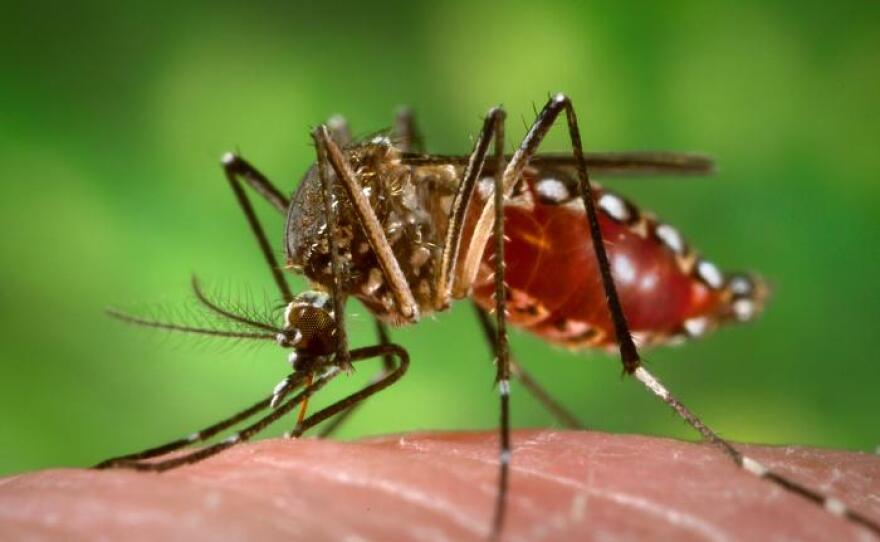The World Health Organization is sounding a global alarm over Zika, a mosquito-borne virus linked to severe birth defects in thousands of babies in Brazil.
Mosquitos capable of carrying the Zika virus are found in San Diego County, but there is no active virus here, said Chris Conlan, supervising vector ecologist with San Diego County’s Department of Environmental Health.

The yellow fever mosquito, also known as aedes aegypti, was first discovered in San Diego near Barrio Logan at the end of 2014. It likely hitchhiked on a cargo ship or via a traveler, Conlan said.
Now the blood-sucking black and white striped insect has multiplied and expanded its reach.
“They spread pretty far around South County, and they also showed up in several patchy distribution locations around North County as well,” Conlan said.
Zika virus does not spread from person to person. The only way the virus could become established in the county is if a traveler returning with the virus is bitten by an aedes mosquito here.
“Several days later, once that virus has had the opportunity to go through sort of an incubation and replication phase in that mosquito, that mosquito now becomes infective to any other humans that it might bite,” Conlan explained.
He said San Diego’s typical cool winters and dry summers are not ideal for aedes mosquito breeding. Last summer’s warm, tropical rains triggered the population boost, Conlan said.
“The warmer weather, it allows them to breed faster,” he said.
Conlan said other mosquito-borne illnesses such as dengue fever and chikungunya can be used as models for what to expect with Zika.
“We’ve had these aedes mosquitos in the United States for a long time,” Conlan said. "They’ve been in Florida and Texas and those places for many, many years now. Dengue has been in Mexico for many years as well, and you really haven’t seen it creep across the border very far.”
Two cases of the Zika virus have been reported in San Diego County over the past two years — both people contracted the virus while traveling abroad.
People are urged to use mosquito repellent and to help prevent mosquito breeding by eliminating containers with standing water from their yards.







